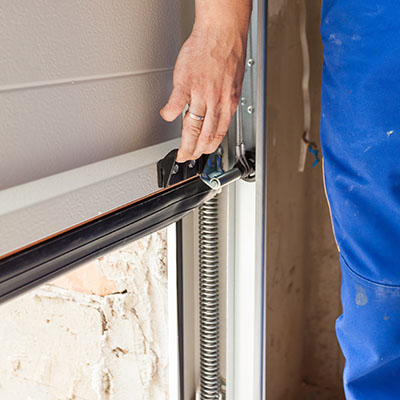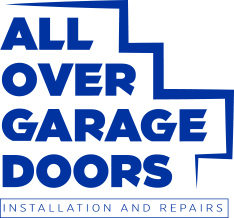Frequently Asked Questions
Do I need a new garage door?
Are you considering a new garage door? There are many reasons you might want to upgrade to a new garage door, such as:
- Increasing the R-value
- Noise reduction
- Security Reasons
- Increased curb appeal
R-value measures your garage door’s resistance to the flow of heat and insulation effectiveness. Is your garage extremely cold in the winter and hot in the summer? Chances are you have an older model door or your garage doors lack insulation. You can reduce the effects of the seasons changing by taking steps like adding insulators or upgrading to garage doors with insulation and a higher R-value.
Manufacturers offer multi-level door construction options regardless of the construction materials used that allow a shopper to customize an R-value appropriate for their climate and needs. For example, garage doors constructed and filled with polyurethane are more energy-efficient than those built and filled with polystyrene.
Depending on door construction materials and the number of layers, R-values can range from 5.7 to 20.4.
Making changes that increase your R-value can affect the inside of your home as well, especially if there’s a room above your garage. Insulated garage doors tremendously help with energy efficiency. Also, the additional insulation will increase the quietness within your home from outside noise.
Lastly, like any mechanical object, you won’t be able to completely eliminate the sound of your garage door functioning, but you can reduce the sound to where it’s virtually unnoticeable by purchasing a garage door with insulation.
Home invasions often happen through the garage door. Older wooden garage doors are easier to gain access into your home compared to the newer, steel garage doors. Experienced thieves know when they see older doors they stand a good chance of being able to get into your home.
Older openers do not have the safety features of the newer models, thus making gaining entry to your home an easier target for home invaders.
If you are considering selling your home in the near future, upgrading your garage doors is one of the top improvements you can make. On average, a new garage door will provide you with an 85% return on investment while improving your curb appeal. Adding windows and decorative hinges to your garage doors are nice perks, too.
How can I know how a new garage door will look?
Many garage door manufacturers have tools on their websites that allow you to see how your new doors will look before you purchase them. You can upload a photo of your current garage door and try out different colors, styles, and features to see how they will look in real life.
Check out the links for different manufacturers on our Products page to start exploring options for your new garage doors.
How do I know when it's time to replace my garage door's springs?
The use of the garage door has changed in recent years, partially due to the Coronavirus pandemic, with families working from home and package delivery being at an all-time high. Your garage door springs have a life expectancy, usually of 10,000 cycles (up and down equals one cycle). With people using their garage doors more than before, we can no longer expect our garage door springs to last 7-8+ years as they did in the past. The reduced life-span of the springs is really not reduced at all; we now use up the springs’ life cycle at a raster rate than before.
It’s a bad idea to wait for your springs to break before you replace them. Once your springs break, your garage doors are unusable until they can be replaced (and you may not be able to get your car out of your garage if that happens).
Knowing approximately how long it has been since your springs were installed, how much you use your garage doors and watching for signs of wear can help you get ahead of this inconvenience. Time, use, and moisture can all take a toll on your springs, which can cause them to snap.
It is recommended that you replace both springs at the same time.
Garage door springs work as a counterbalance system to offset the weight of the heavy door. When one spring breaks, the door is too heavy to lift, making the door inoperable. This can be very inconvenient if your car is inside! If you want your garage door to actually open, you need dependable, working springs.
Torsion Springs
Torsion springs are located above the opening of your door with springs that slide onto a bar.

Extension Springs
Extension springs run along each side of your garage door as it opens and closes.

What are my options for garage door openers?
There are many different options for garage door openers, and they range in price and quality. Knowing which garage door opener is right for you depends on your budget, climate, noise concerns, and garage ceiling height.
The four types of openers are
- Chain Driven Openers
- Screw Driven Openers
- Belt Driven Openers
- Jackshaft Openers
Most garage doors use chain drives. With chain drive openers, metal chains pull the door up and down its tracks. This metal-against-metal creates the noisy garage door sound. Even though chain driven openers are considered pretty reliable, and are slightly cheaper than some other openers, their noise can make them inconvenient if your garage is located below or next to a bedroom.
Screw driven openers are the least expensive openers you can purchase for your garage door. They are also the slowest, even though they are considerably quieter than chain driven openers. With these drives, garage doors are lifted along a threaded steel rod. Screw driven openers can handle larger and heavier doors than chain driven openers. However, these types of openers are not recommended in areas with considerable weather changes throughout the year.
Belt drives are the gold standard for garage doors. They’re quiet and reliable. However, they do tend to be a little more expensive than chain driven openers.
Unlike other types of openers which are mounted on the garage ceiling, jackshaft drives are mounted on the wall next to the garage door. Jackshaft drives are excellent choices if your ceilings are too high for a regular, ceiling mounted opener.
Other frequently asked questions
Will you program my garage door, keypad, and remote?
Yes we will!
What types of payment do you accept?
We gladly accept cash and checks. We will also accept credit cards with customer paying the 3.75% processing fees.
